Sapperton House
Houses within 5km of this house
Displaying 16 houses.
Houses within 5km of Sapperton House
Displaying 16 houses.
| House name | Description | |
|---|---|---|
| Strancally Castle | John Keily held Strancally Castle in fee at the time of Griffith's Valuation, when it was valued at £61. Lewis refers to it as "a modern castle, seat of J. Keily" in 1837. There is a lithograph and extensive description of the castle and demesne in the sale notice of 1856. After this the castle came into the ownership of the Whitelock Lloyd family. In 1906 it owned by George W. Lloyd and valued at over £63. The 1943 ITA Survey provides a detailed description of the house from that time including the art collection and library. It is still extant and has been renovated in recent years. An extensive farmyard, valued at £37 in 1851, is located in Kilmanicholas townland at X078903. This property was valued at over £40 in 1906. |
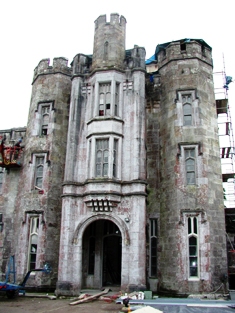
|
| Ballyhamlet House | James Parker was leasing Ballyhamlet from the Earl of Shannon's estate in 1851 when it was valued at £17. There is still an extant house at the site. | |
| Headborough | At the time of Griffith's Valuation, Headborough was held in fee by Mrs. Catherine Smith [Smyth] and valued at £60. Lewis refers to it as the seat of Rev. Percy Scott Smyth in 1837. In 1906 it was owned by Percy Smyth with a valuation of £50. Smith mentions Headborough as the seat of William Smith. In 1943 the ITA survey notes that the stone used in its building was transported from county Kerry. It is still extant and occupied. |

|
| Janeville (County Waterford) | Janewille House was vacant at the time of Griffith's Valuation, when it was part of the Ussher estate and valued at £22 10s. A second house [X027936] in the same location was leased by Henry Smyth from the Ussher estate and valued at £15 10s. In 1837 Lewis refers to Janeville as the seat of A. Keily. Wilson, writing in 1786, refers to it as the seat of John Keily. The house is no longer extant. | |
| Moorehill | Held in fee by William Moore at the time of Griffith's Valuation, when it was valued at £55. Lewis also refers to it as his seat in 1837. Wilson, writing in 1786, notes it a the seat of Rev. Mr. Moore. In 1894 and 1906 it was the property of Captain William Perceval Maxwell and valued at over £70. In 1943 the ITA survey noted it as the residence of Captain Maxwell and mentioned that it was an eighteenth century house. It is still extant and occupied. | |
| Snugborough | In 1786 Wlson refers to Snugborough as the seat of Mr Smith. Mrs. Helena Greaves was leasing this property to Richard Walsh in 1851 when it was valued at £10 10s. An extensive farmyard complex still survives at the site. |

|
| Ballinanchor House | Ballinanchor was owned by Thomas Foley in 1851 when it was vacant and valued at £12. In 1814, Leet refers to it as the residence of Captain Thomas Poole. A house and farm still exist at the site. | |
| Toortane House | In 1851 Thomas Foley was leasing this property from the Devonshire estate when it was valued at £33 10s. Lewis refers to it as his seat in 1837. It is still extant and occupied, having been restored. |

|
| Ashbourne House | In 1851 Edmond Foley was leasing this property from the Devonshire estate when it was valued at £21 10s. It is labelled Ashbourne House on the later 25-inch Ordnance Survey Map. | |
| Camphire House | Held in fee by Christopher Ussher in 1851 when it was valued at £28. It was the residence of Christopher M. Ussher in the 1870s. Buildings at this location were in the possession of the Ussher family in 1906 and valued at almost £6. In the 1940s the ITA survey noted that it was occupied by Mrs. Chearnley but owned by the Dobbs family and had formerly been a residence of the Ussher family. The Irish Army also seemed to have occupied part of the building during World War II. Camphire is still extant and occupied. |
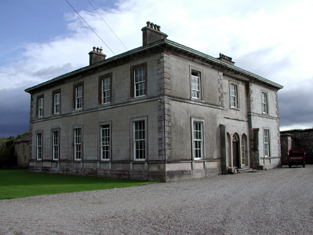
|
| Lismore Townparks West | In 1851 William Baldwin was leasing this property from the Devonshire estate when it was valued at £11. | |
| Tubbrid (Lismore) | In 1851 this property was held in fee by Townsend Keily and valued at £23 10s. The property is still extant and part of a large farming enterprise. | |
| Kilmore House (Tallow) | Held in fee by Rev. William Percival at the time of Griffith's Valuation, when it was valued at £37. Lewis refers to it in 1837 as "Kilmore Hill, residence of Rev. W. Percival, a handsome seat on the new line of road to Youghal". Wilson, writing in 1786, refers to the Perceval residence near Tallow as "Kilmahoe". In 1906 it was still owned by William Percival and valued at £37 10s. |
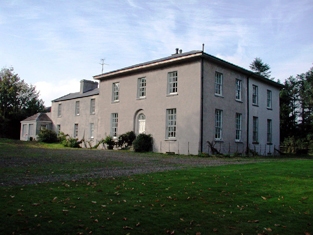
|
| Roseville (Tallow) | Leased by William Parker from the Devonshire estate at the time of Griffith's Valuation when the buildings were valued at £20 10s. It is also recorded as his address in the 1870s. Roseville is still extant and occupied. |

|
| Mayfield (Lismore) | The sale notice concerning the property of Robert Dring O'Grady in the barony of Coshmore and Coshbride, county Waterford, includes details of the house built on the property by Captain O'Grady in the 1850s. It was "of modern construction" and had cost over £1200. |
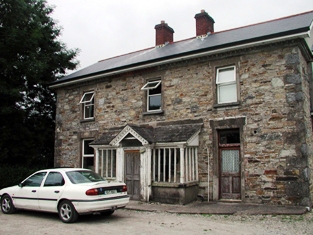
|
| Dromana | The seat of the Villiers-Stuart family, Lord Stuart de Decies, and held in fee by them in 1851 when it was valued at £101. In 1837 Lewis had noted that "its hanging gardens presents a picturesque and interesting feature". Charles Smith, referring to it as a noble seat of the Earl of Grandison, provides a detailed description of how it looked in the later eighteenth century. An account of its appearance in the 1940s is given in the Irish Tourist Association files. The National Inventory of Architectural Heritage indicates it is a seventeenth century house possibly incorporating parts of a medieval tower house. It was later extended and renovated but this Georgian extension was demolished in the 1960s leaving the original seventeenth century building. It is occasionally open to the public. |
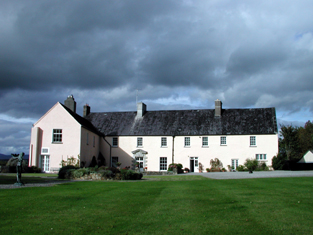
|

